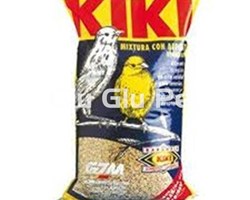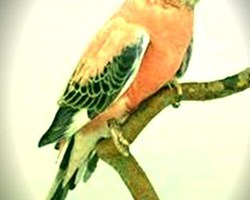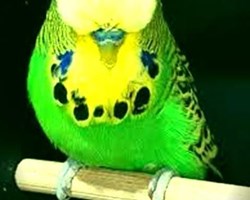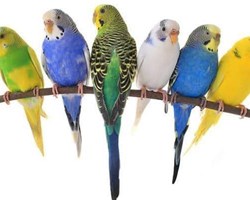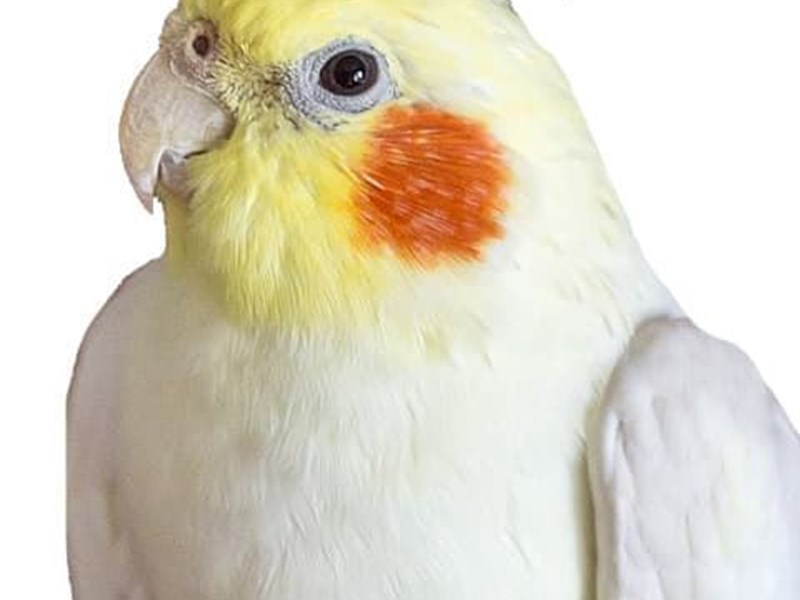
MALE OR FEMALE NYMPH- WHICH IS BETTER AND THEIR DIFFERENCES:
It is very likely that you are wondering whether to host a male or female nymph, what is better according to your lifestyle and what differences there are between males and females.
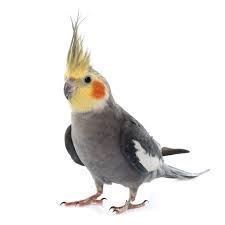
If you are interested in knowing the differences between male and female nymphs, we invite you to read this article from Glu Glu Pet in which we not only help you make this difficult decision, but also explain what care this beautiful bird needs. and their behavior.
Of course, before doing so we encourage you to reflect on the ownership of these animals and the type of life that you are going to offer them, since it is not appropriate for them to remain locked up in a cage 24 hours a day.
You can see other related articles: Nymphs, they adapt to family life and learn to interact and communicate with the people they love.
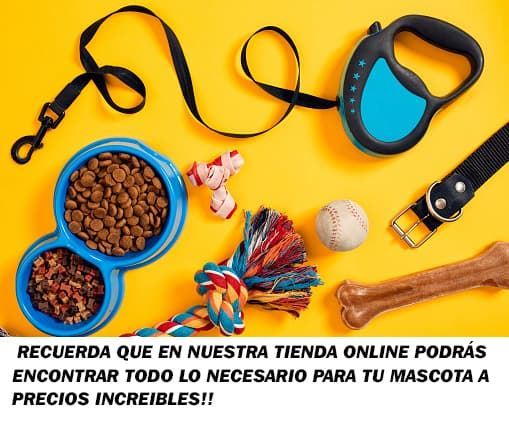
BEFORE ADOPTING A NYMPH:
Before adopting a nymph or carolina cockatoo you must be completely sure that this is the most suitable pet for you and your family.
Birds do not always adapt to all lifestyles, since they are animals that require a large amount of free time, space, commitment and dedication.
Living with a bird is not as simple as leaving it in its cage, giving it food and water, keep in mind that it is an animal that was born with wings and, as such, needs to fly.
Likewise, they tend to be quite long-lived animals with proper care, with the average lifespan of cockatoos being 20 years.
If you are looking for a quiet animal that makes little noise and does not make a mess, the cockatoo or any other bird of the order of the psittaciformes is not the most suitable for you.
If finally this is the animal that best fits you and your family and you are determined to adopt it, read on and offer the best care to your nymph cockatoo.
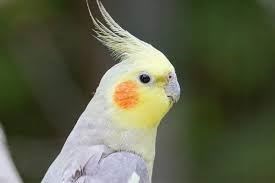
CARE OF THE NIFAS:
Before welcoming a nymph into your family, it is important that you document yourself well on the necessary care of this bird, how to cover all its needs is your responsibility as the owner to guarantee the correct welfare of your animal.
What care does this species need?
- Food and water: offering your Carolina the best food will be key for her to be strong, healthy and happy. Generally, it is recommended to buy food in specific pellets for this species and complement them with the intake of fruits and vegetables, as well as occasionally some nuts. Obviously, water is also essential, so your nymph must always have access to clean and fresh water.
- Calm and safe environment: these birds need to have their nest and cage in a quiet place or without noise that could disturb it, with all their needs within their reach (food, water, entertainment and with the possibility of sheltering from rain, wind, heat (must have access to shadow), etc.
- Physical exercise: it is necessary that your nymph has freedom outside the cage with the intention of doing physical exercise, since these animals need to fly, as well as climb with the help of their legs and beak.
- Social interaction: This species, like many other birds, is very social. It therefore requires a lot of attention, either from its human partner or from another nymph companion.
- Environmental enrichment: Carolinas need to be entertained daily with different elements, such as toys, to promote cognitive activity, combat boredom and consequently prevent them from developing behavior problems and even stereotypies.
The nymph or carolina cockatoo is one of the most popular pet parrots, not only because of its size and great intelligence, but also because of the belief that it is low maintenance.
If you want to live with a happy and well-stimulated bird, the truth is that you must dedicate time, attention and money to ensure proper environmental enrichment.
For this reason, in this Glu Glu Pet article we will review each of the points that make up the basic care of the cockatoo, such as its feeding, cage layout, and much more.
Whenever we decide to adopt an animal, regardless of the species, it is our responsibility to guarantee its well-being.
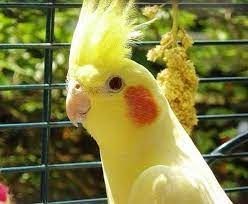
THE CAGE OF THE NYMPH OR CAROLINA:
Birds are born to fly and many experts argue about keeping domestic birds in cages or not.
At least at night, this is the best way to ensure the safety of the Cockatoo.
THE IDEAL SIZE OF THE CAGE FOR THE NYMPH:
Although we cannot establish a maximum, we must set a minimum, and that is that the width of the cage must be large enough so that the adult cockatoo can open and flap its wings without damaging its wings.
Regarding height, it must guarantee that the animal's tail does not touch the ground when it walks around the cage.
Priority should be given to cages with horizontal bars as they allow the birds to climb and keep them stimulated as this is one of their favorite activities.
WHERE TO PLACE THE CAGE:
The ideal cockatoo cage location depends on the bird's personality.
Most cockatoos are very sociable and can be placed in areas such as the living room, it is one of the best options to maximize social interaction with the people who are in that space.
Shyer Carolina nymphs may prefer quieter areas, such as a bedroom.
The position of the cage depends on the character of the cockatoo, since adapting its placement to the personality of the animal will enhance the feeling of security.
Some ethologists specialized in birds affirm that placing the cage in a very high place can promote the aggressiveness of the animal, since it feels superior to the rest of the family members.
Others claim that the most insecure birds can live in a state of intense anxiety if the cage is too low.
The height of the cage must also be adapted to the needs of the cockatoo, so it is essential to observe its behavior.
To promote a greater sense of security, it is recommended that the cage is located against the wall.
WAS THE NYMPH ABLE TO TAKE THE SUN?
Exposure to sunlight is essential for the well-being of the carolina nymph, and it is through the sun that the animal manages to produce the optimal amount of vitamin D, essential for calcium metabolism.
It is very important that the sunlight hits it directly and not through the glass of a window.
If the cage is not near a window that can be opened fully, it will need to be placed outside for a few hours at the end of the day or early in the morning to avoid heat stroke.
Remember that the cockatoo nymph must have shade at all times to take refuge if it does not want to sunbathe anymore; You should never leave its cage completely exposed to sunlight.

NUTRITION OF THE NINFA OR CAROLINA:
Feeding is one of the most important points when it comes to offering the best care to the nymph cockatoo, not only to guarantee its well-being, but also to avoid the development of some of the most common diseases of the nymph.
The best diet is one that meets all the nutritional needs of the cockatoo, offering the vitamins, minerals, amino acids, etc., that it needs.
At Glu Glu Pet you can find a wide variety of seed mixes made especially to feed domestic cockatoos.
In recent years, veterinarians specializing in this type of bird have recommended opting for a diet based on pellets suitable for Carolina nymphs.
Despite being more expensive, they are the best option, since they prevent the bird from selecting the seeds it likes the most, discarding the rest and promoting a nutritional imbalance.
The rations must be prepared according to the specific needs of each species and age of the animal, therefore, when purchasing the food, the package must be reviewed and the type of nymph must be taken into account.
If you want a change of diet or brand of it, it is essential to carry it out gradually.
It is very important that the consumption of pellets is complemented by the intake of fruits and vegetables, the ideal being the following proportion: 75% pellets, 20% fruits and vegetables, and the remaining 5% dedicated to rewards, such as nuts .
Of course, clean and fresh water should never be lacking, and it should be changed every day.
Vitamin supplements:
Most veterinarians advise against the use of vitamin supplements, except in cases of previously diagnosed vitamin deficiency.
Why is it discouraged?:
Most of the supplements require dissolution in water and it is practically impossible to control the amount of water that the animal ingests, so there is a high risk of nutritional excess or deficiency.
In fact, several cases have been reported of birds that, due to excessive vitamin D supplementation, have developed hypercalcaemia.
THE NYMPH NEEDS TO BATH:
Allowing the Carolina Nymph to bathe stimulates its natural behavior, promotes well-being and contributes to better maintenance of the feathers.
- Container with water: Place a container covering 2/3 of its capacity with fresh and clean water in its cage. Remember to change the water daily or when you finish bathing.
- Spray: Put water in a spray bottle and moisten your cockatoo keeping a certain distance to simulate the effect of rain.
- Rain: On days with light rain, you can take the opportunity to place the cage outside for a few minutes and let the nymph enjoy a natural bath. Many birds love this method as they represent a wild environment.
- Shower: Some birds thoroughly enjoy a bath with their human companions, even selling suction cup perches for showering at specialty bird accessory stores. Of course, it is necessary to pay attention to the temperature of the water so that it is neither too cold nor too hot.
The important thing is to ensure that the cockatoo bathes regularly, weekly or daily, depending on its tastes and needs.
Observe the behavior of your nymph and, if you see that she feels uncomfortable or nervous, do not insist or force her, just try another day.
In the same way, select the mode that she likes the most, not the one that is most comfortable for you.
After bathing, it is essential that the bird be dried, cleaned and groomed in a warm, draft-free environment.

SLEEP HOURS OF THE NYMPH:
It is essential that the nymph or carolina cockatoo sleep the right hours and without interruptions to maintain its health in perfect condition.
Sleep deprivation is one of the main causes of behavior problems, such as picking or plucking their feathers.
The cockatoo's sleep ranges between 10 and 12 hours, so it needs much more sleep than we do.
During this period, there can be no noise or lights to wake her up, so if your nymph is used to being in the living room late, you should move the cage to another room when she sleeps.
A cockatoo that sleeps the hours it needs is a calm bird, less stressed and happier.
IDEAL TOYS FOR THE NYMPH:
Environmental enrichment is essential to ensure that the nymph or carolina cockatoo remains happy and well stimulated.
In this sense, toys are the easiest and most used form for this purpose.
The ideal is to have some toys inside the cage, no more than three, to be exchanged regularly and avoid boredom.
There are several types of toys available for nymphs on the market, the following being the most recommended:
- strings
- Bells.
- Ladders.
- Seesaws.
- Mirrors.
You can also build your own toys using natural branches, for example.
The ideal toys are those that offer the cockatoo the challenge of looking for and getting food, since in the wild this task would occupy 70% of its day.
The easiest way to simulate this state and keep the bird stimulated is by distributing the toys and creating an environment as natural as possible, which encourages the nymph to discover how to manage the environment to reach its reward, which can be nuts or your favorite seeds.
SOCIAL INTERACTION:
Social interaction is an essential factor in the day-to-day life of the Cockatoo.
If the nymph does not have any companions, it must be her human family who assumes that role and relates to the bird.
You can include the cockatoo in various family activities, you can talk to it, make whistles and even try to educate it.
When the bird is left for many hours alone and confined to its cage, it tends to develop behavior problems and disorders such as stress or anxiety if no stimulation is available.
A good stimulus can be the reproduction of the sound of other birds so that they feel that they are accompanied.
It is essential that the cockatoo has freedom outside the cage in order to promote the practice of physical exercise, essential to guarantee its well-being.
Remember wue is a bird that was born to fly, and needs to fly.
Cockatoos are extremely intelligent birds, and when they live under our roof we are responsible for everything around them.
It is our duty not only to provide water and food, but also to offer a stimulating environment at the height of the cognitive abilities of this bird if we want to ensure the best care for the nymph or carolina cockatoo.
NYMPHS CAN SPEAK:
One of the behaviors that has most surprised us human beings over time has been to see that there are birds capable of making the most varied vocalizations, becoming capable not only of imitating words perfectly, but in case more extreme, learning to sing songs.
One of these birds is the nymph or carolina, it has brought out more than one smile thanks to its surprising ability to imitate words.
Sound communication is vitally important for nymphs.
For this reason, it is not surprising that it is often stated that nymphs speak.
This belief is not entirely correct, since the nymphs do not speak, but rather imitate sounds.
We must bear in mind that we understand the act of speaking as communication established through words, that is, sounds with their own meaning in a specific culture, which are created thanks to the vocal cords.
Based on this definition, if we compare the behavior and specific capacities that nymphs have when they emit sounds, it is not exactly what we would say to speak, because to begin with, these birds do not have vocal cords, but rather the great capacity they have to imitate sounds perfection is due to the membrane located at the base of the trachea, an organ called the syrinx.
The fact that the nymphs imitate the sounds of human speech, that is, words, is the result of the learning that these birds carry out in their usual social environment to function better in it: to express their mood, needs and intentions.
It does not mean that they speak, but that they have learned that sound and may relate it to a specific situation through learning. Therefore, the sound alone lacks meaning, since these birds are not capable of defining said word.
AT WHAT AGE DO NYMPHS SPEAK?
There is no strict age at which nymphs begin to speak.
This occurs once your bird begins to reach a certain degree of maturity, because when it is small most of the sounds are to claim food.
Keep in mind that learning is constant and varies depending on age.
It is important to talk to your nymph often so that she gets used to the sound and as she matures she may make her first efforts to imitate you.
Each nymph has its own pace of learning, do not be overwhelmed if you see that your little one is not interested, because it could well start soon at 5 months or a little later, at 9.
Also, keep in mind the sex of your nymph, since it is generally the males who are more predisposed to emit all kinds of sounds and perfect them, while the females are rather silent.
BEHAVIOR OF THE NYMPHS:
Nymphs, like many birds, are a species that requires social interaction, as well as the formation of bonds with other individuals, to feel protected and at ease in their environment.
This cockatoo expresses its comfort and happiness when it is with other companions, spending time together, pampering and grooming each other several times a day.
The formation of these links requires prior communication to contact and exchange training with others.
This expression of messages and intentions occurs in birds, not only with the specific body language of this species, but, above all, through the emission of sounds.
Nymphs are one of the most loved and popular parrot species.
These birds are excellent pets for many reasons, their affectionate nature, elegance and intelligence.
It is not strange that they have won the hearts of those owners who have decided to welcome this bird into their homes.
Living with a nymph implies knowing very well what its care and nature are.
Other articles that may interest you:

